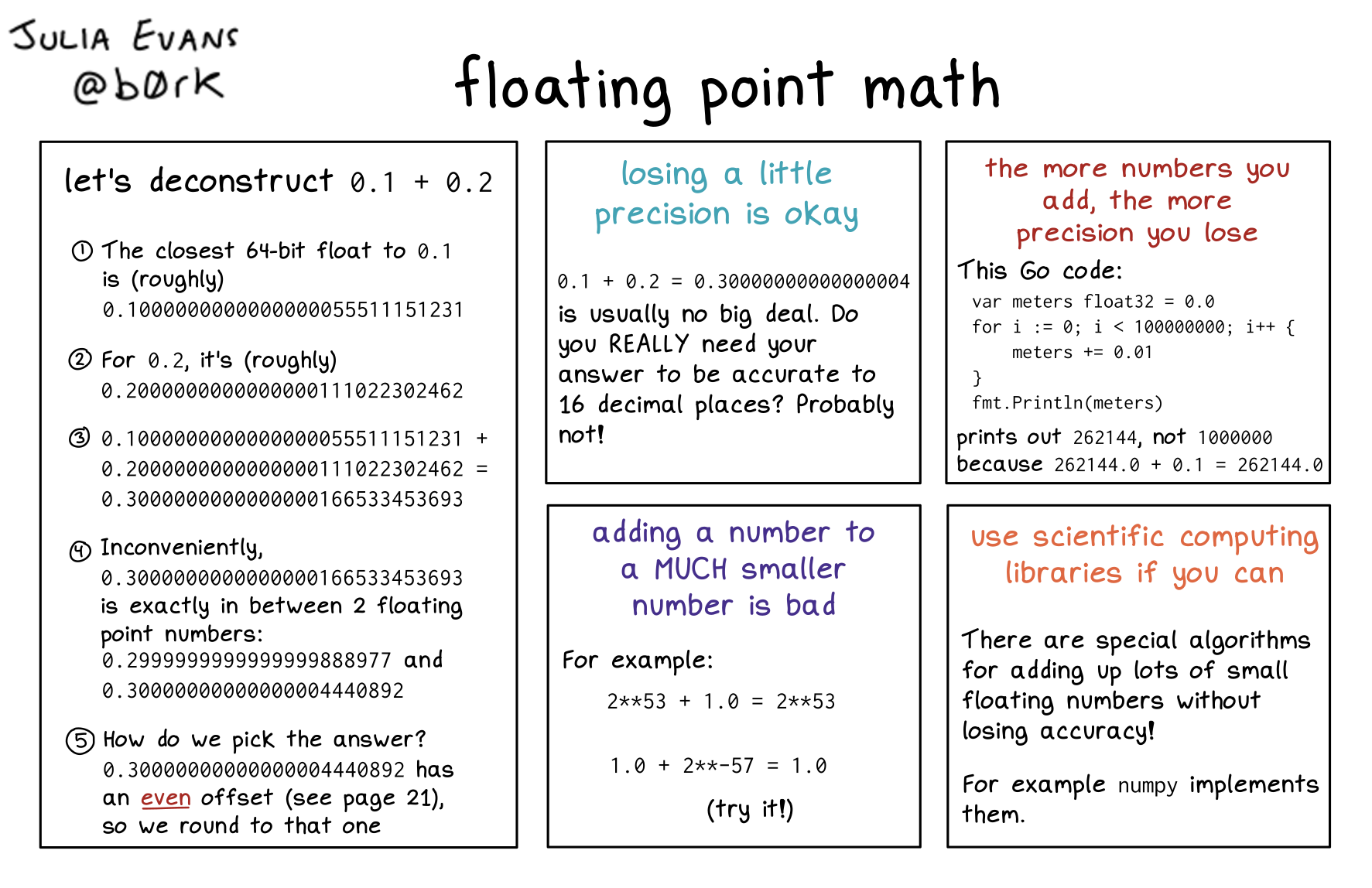
Here's a preview from my zine, How Integers and Floats Work! If you want to see more comics like this, sign up for my saturday comics newsletter or browse more comics!
 get the zine!
get the zine!
read the transcript!
floating point math
let’s deconstruct 0.1 + 0.2
-
O The closest 64-bit float to 0.1 is (roughly)
0.1000000000000000055511151231 -
For 0.2, it’s (roughly)
0.2000000000000000111022302462 -
0.1000000000000000055511151231 + 0.2000000000000000111022302462 = 0.3000000000000000166533453693 -
Inconveniently,
0.3000000000000000166533453693is exactly in between 2 floating point numbers:0.2999999999999999888977and0.30000000000000004440892 -
How do we pick the answer?
0.30000000000000004440892has an even offset, so we round to that one
losing a little precision is okay
0.1 0.2 0.30000000000000004 is usually no big deal. Do you REALLY need your answer to be accurate to 16 decimal places? Probably not!
the more numbers you add, the more precision you lose
This Go code:
var meters float32 = 0.0
for i = 0; i < 100000000; i++ { meters += 0.01
} fmt.Println(meters)
prints out 262144, not 1000000 because 262144.0+ 0.1 = 262144.0
adding a number to a MUCH smaller number is bad
For example:
2 xx 53 + 1.0 = 2 xx 53
1.0 + 2 xx -57 = 1.0
(try it!)
Use scientific computing libraries if you can
There are special algorithms for adding up lots of small floating numbers without losing accuracy!
For example numpy implements them.